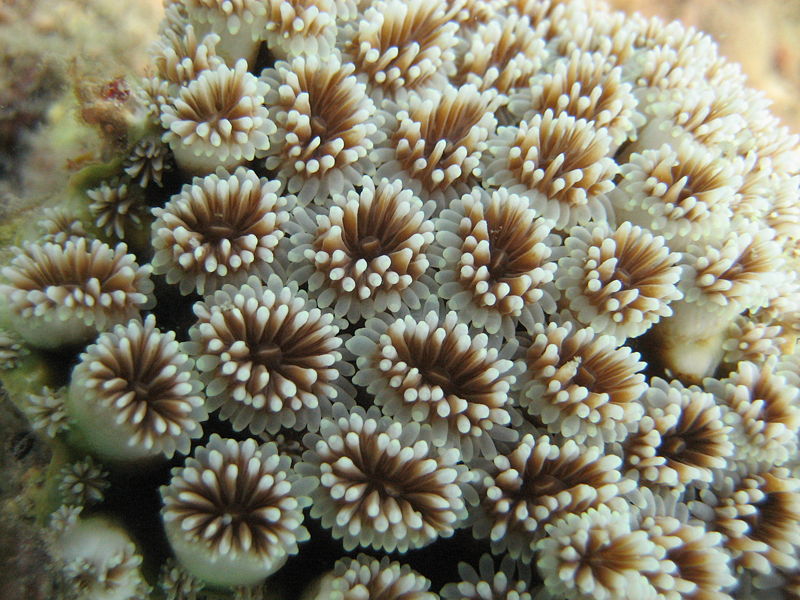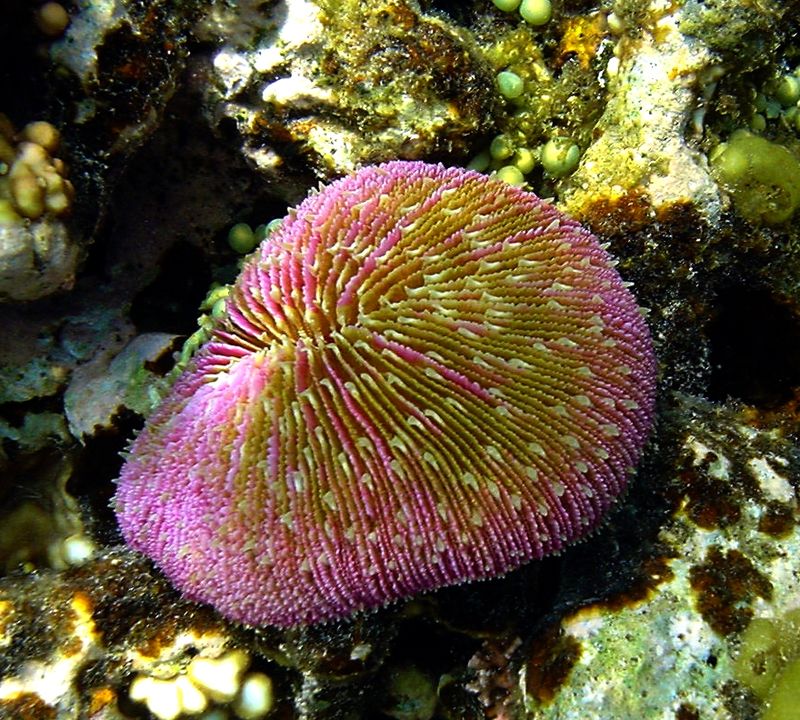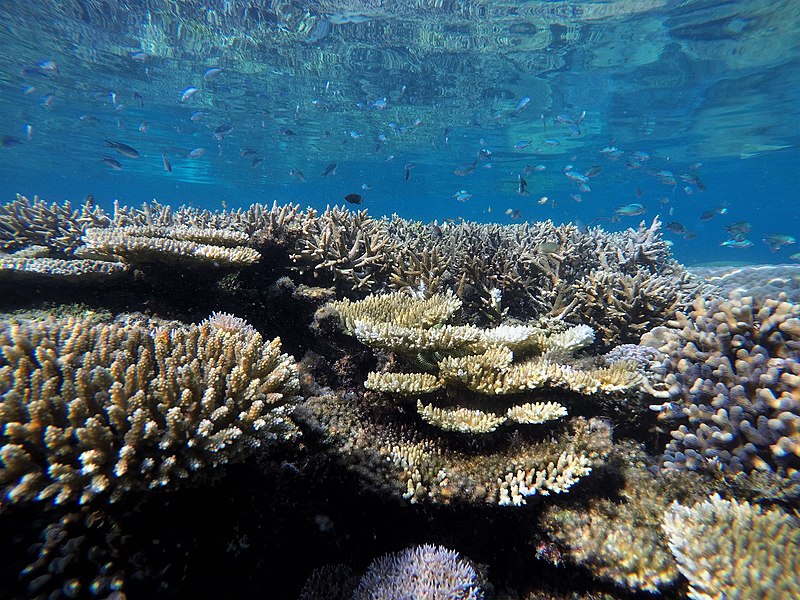Coral Reef Food Web
The Primary Consumers – are coral, sea turtles, and fish. The Secondary Consumers – the sharks, anemones, starfish, Baracuda, jellyfish, sea snakes, and sea slugs. The Scavengers – the fish. The Decomposers or Detritivores – are microorganisms.

The type of consumers are corals
The corals get energy from the algae so in this sense are primary consumers. Corals are also secondary consumers at the third trophic level because they also eat zooplankton and other small organisms they catch with their tentacles. Zooplankton that eat phytoplankton is the primary consumer at the second trophic level.
Primary producers of coral reefs
The main benthic primary producers in coral reef systems are scleractinian corals with their endosymbiotic algae, crustose coralline algae (CCA), filamentous turf algae, fleshy macroalgae, and microphytobenthos in the upper layer of reef sediments (Odum and Odum, 1955; Hatcher, 1988).
Coral reef food web work
The Phytoplankton is consumed by Zooplankton, a primary consumer. Some secondary consumers then consume the Zooplankton: the Fan Worm, the Blue Chromis, the Sea Sponge the Coral Polyps. The Fan Worm is eaten by the tertiary consumer, the puffer fish.
Secondary consumers
These include wrasse, butterflyfish, filefish, triggerfish and goatfish, to name just a few. These small fish eat corals as well as sea worms, sea snails and crustaceans. You will see these fish picking at a reef like a bird pecks at food.
Is coral a producer consumer or decomposer?
The coral reefs and algae are producers in the coral reef. Tropical fish, shrimp, and clams are consumers in the coral reef. Ocean organisms like sharks, dolphins, and sea turtles are consumers.

Consumers of the coral reef
Some examples of primary consumers are corals, small fish, and zooplankton. Secondary consumers include crab, small fish, and clams. Tertiary consumers include larger fish, sharks, and octopuses.
Plants live in coral reefs
Besides zooxanthellae, algae and seagrasses are the main types of plants in the coral reef ecosystem. These plants give food and oxygen to the animals that live on the reef. Seagrasses are especially important because they provide shelter for juvenile reef animals like conch and lobster.
Why are coral reefs important for food?
Coral reefs provide food to millions of humans. Corals, like trees, provide three-dimensional structures and substrates to house and feed fish and other marine animals that humans eat.
What eats plankton in coral reefs?
Many coral reef animals such as clams and other sediment-feeding molluscs, soft corals, sponges, feather duster worms, tunicates, copepods and other zooplankton (including invertebrate larvae) feed directly on phytoplankton for all or at least some of their diet.
What eats algae in the coral reef?
Algae-eating parrotfish, like other herbivorous reef fish, play an important role in coral reef ecosystems by removing the algae that compete with corals.
Decomposers in the coral reef
The main decomposers inside the reef include bacteria, sea cucumbers, some species of snails, crabs and bristle worms. In the coral reef, an example of a decomposer is a sea cucumber. They also bring nutrients back into the ecosystem energy can be another cycle.
Carnivore in coral reefs
Carnivores (such as moray eels, monk seals, and sharks), prey on the herbivores, which helps to keep their population in balance. Darting among the corals are many beautifully coloured fish that have adapted to feed on both plants and animals.
Dangers to Corals
In addition to weather, corals are vulnerable to predation. Fish, marine worms, barnacles, crabs, snails and sea stars all prey on the soft inner tissues of coral polyps. In extreme cases, entire reefs can be devastated if predator populations become too high.
Despite their importance, warming waters, pollution, ocean acidification, overfishing, and physical destruction are killing coral reefs around the world.
Does coral produce its own food?
Corals are animals, though, because they do not make their own food, as plants do. Corals have tiny, tentacle-like arms that they use to capture their food from the water and sweep it into their inscrutable mouths.
Do fish eat coral?
Some fishes have an ‘obligate’ association with their coral prey, meaning the majority of their diet is centred on coral, and approximately one-third of all corallivorous fishes fall into this category. Other corallivorous fishes include coral as a measurable part of their diet but also utilise other food items.
Which fish live in coral reefs?
Many commercially important fish species, like grouper, snapper, and lobster, depend on coral reefs for food and shelter.
How do corals eat?
Corals are communal animals related to sea anemones and jellyfish. Like their cousins, they catch tiny animals (called zooplankton) using stinging tentacles that surround the single body opening that acts as both a mouth and anus.

